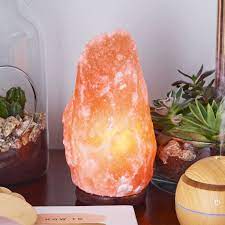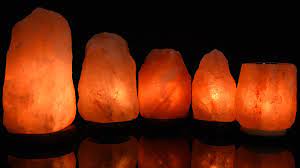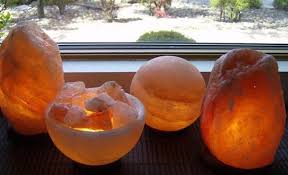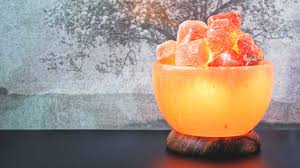Salt lamps are a popular choice for those seeking to enhance the ambiance of their living spaces. These unique sources of light are not only aesthetically pleasing but also purported to have various health benefits. Understanding the lifespan of salt lamps is crucial for consumers looking to make an informed purchasing decision.

This article aims to provide comprehensive information regarding the factors affecting a salt lamp’s longevity, including natural degradation processes and proper care techniques. Additionally, it will explore methods for reviving or repairing these lamps and discuss the average lifespans of different types.
By following the tips provided, readers can optimize the lifespan of their salt lamps and know when it is time for replacement.
Key Takeaways of HOW LONG DO SALT LAMPS LAST
- The lifespan of salt lamps can be affected by factors like environmental conditions, maintenance practices, and salt quality.
- Factors such as exposure to moisture, excessive heat or sunlight, and improper handling can accelerate the deterioration of salt lamps.
- Proper cleaning and maintenance techniques, such as dusting with a dry cloth, can help extend the lifespan of salt lamps.
- Placing salt lamps in dry areas with low humidity levels and avoiding contact with water or other liquids can also help prolong their longevity.
Factors Affecting the Lifespan of Salt Lamps
Various factors can influence the lifespan of salt lamps.
One important factor is natural aging. Over time, salt lamps may naturally deteriorate due to environmental factors such as humidity and temperature changes. These changes can cause the crystal structure of the salt to break down, reducing the lamp’s effectiveness and overall lifespan.

Another factor that affects the longevity of salt lamps is maintenance. Regular maintenance can help extend their lifespan. Some maintenance tips include keeping them away from moisture, wiping them with a dry cloth to remove dust buildup, and avoiding placing them in direct sunlight or near heat sources.
Additionally, using a low-wattage bulb and avoiding excessive handling or moving of the lamp can also contribute to its longevity.
Understanding the Natural Degradation of Salt Lamps
This discussion will focus on the lifespan of salt lamps, factors that can accelerate their deterioration, and ways to extend their longevity.

The lifespan of a salt lamp can vary depending on several factors such as the quality of the salt used, environmental conditions, and maintenance practices.
Factors that can affect the deterioration of salt lamps include exposure to moisture, excessive heat or sunlight, and improper handling.
Lifespan of Salt Lamps
The lifespan of salt lamps can be determined by several factors that affect their durability. One such factor is the size of the lamp. Larger salt lamps tend to last longer compared to smaller ones due to their larger surface area, which allows for slower evaporation of moisture from the salt crystal.
Additionally, how consistently a salt lamp is used also plays a role in its lifespan. Consistent usage helps maintain the integrity and structural stability of the salt crystal, ensuring a longer lifespan.
To maximize the lifespan of a salt lamp, it is important to place it in a dry environment and avoid exposure to excessive humidity or moisture. Furthermore, proper cleaning and maintenance can also contribute to prolonging its durability.
Transition: While factors affecting durability play an important role in determining the lifespan of salt lamps, there are also other factors that can lead to their deterioration over time…
Factors Affecting Deterioration
Factors influencing the deterioration of salt lamps include exposure to high levels of humidity or moisture, improper cleaning and maintenance practices, and inconsistent usage. High humidity can cause the salt lamp to absorb moisture from the air, leading to a breakdown of its structure over time. Improper cleaning techniques such as using water or harsh chemicals can also contribute to degradation by dissolving the salt and causing it to crumble. Additionally, inconsistent usage can impact the lifespan of a salt lamp as frequent turning on and off may lead to condensation forming on the surface, further accelerating deterioration.

To prevent salt lamp degradation, several measures can be taken. Firstly, it is important to place salt lamps in dry areas with low humidity levels. This helps minimize moisture absorption and subsequent deterioration. Secondly, proper cleaning methods should be employed which involve gently dusting the lamp with a dry cloth instead of using liquid cleaners. Lastly, maintaining consistent usage by keeping the lamp turned on for extended periods helps prevent condensation from forming on its surface.
Extending Salt Lamp Longevity
Placing salt lamps in dry areas with low humidity levels helps to minimize moisture absorption and subsequent deterioration. This is crucial for extending the longevity of these unique decorative items. Salt lamps are made from large blocks of natural Himalayan salt, which naturally attracts and absorbs moisture from the air. By keeping them in dry environments, such as living rooms or bedrooms with air conditioning or dehumidifiers, you can prevent excessive moisture accumulation and preserve the integrity of the lamp.
Additionally, proper care is essential for maintaining salt lamps’ effectiveness and aesthetic appeal. Regularly dusting them with a soft cloth and avoiding contact with water or other liquids will help keep them clean and prevent any potential damage. By taking these measures, you can ensure that your salt lamp remains functional and beautiful for an extended period.
Transitioning into the subsequent section about ‘how to properly care for your salt lamp,’ it is important to understand the maintenance requirements necessary to maximize their lifespan.
How to Properly Care for Your Salt Lamp
To ensure the longevity of a salt lamp, it is important to follow proper care guidelines. Proper maintenance and cleaning techniques can help preserve the beauty and functionality of your salt lamp for years to come. Here are some tips to keep in mind:
- Avoid exposure to moisture: Salt lamps are hygroscopic, meaning they absorb moisture from the air. To prevent damage, keep your lamp in a dry environment and avoid placing it near humid areas like bathrooms or kitchens.
- Regular dusting: Dust can accumulate on the surface of your salt lamp over time, dulling its glow. Use a soft cloth or brush to gently wipe away any dust particles.
- Occasional deep cleaning: Every few months, it’s recommended to give your salt lamp a thorough cleaning. Dissolve a small amount of Himalayan salt in warm water and use this solution with a cloth or sponge to wipe down the entire surface.
By following these proper care guidelines, you can extend the lifespan of your salt lamp and continue enjoying its soothing ambiance for years to come.
| Maintenance Tips | Cleaning Techniques |
|---|---|
| Avoid moisture | Regular dusting |
| Deep cleaning |
Signs That Your Salt Lamp Is Losing Its Effectiveness
One indicator of diminished effectiveness in salt lamps is a noticeable decrease in the intensity of their glow. This can occur over time as the salt crystal gradually loses its ability to emit light.
There are several signs that your salt lamp may be losing its effectiveness:
- Dull glow: The once vibrant and warm glow of the salt lamp becomes noticeably dimmer.
- Increased moisture: A higher level of moisture on the surface of the lamp indicates reduced ionization and decreased air purification.
- Crumbling or disintegration: If you notice your salt lamp starting to crumble or disintegrate, it may be a sign that it has reached the end of its lifespan.
To revive a deteriorating salt lamp, there are a few steps you can take:
- Cleanse: Wipe down the surface of the lamp with a damp cloth to remove any dust or debris.
- Dry: Allow the lamp to dry thoroughly before turning it back on.
- Replace bulb: Consider replacing the bulb if it has been used for an extended period.
Can Salt Lamps Be Revived or Repaired
This discussion aims to explore the possibilities of reviving damaged salt lamps, repairing broken salt lamps, and extending their lifespan.
When a salt lamp becomes damaged or broken, it is important to understand the potential solutions available for restoring its functionality.
Additionally, implementing methods to prolong the lifespan of a salt lamp can be beneficial in maximizing its effectiveness and longevity.
Reviving Damaged Salt Lamps
Reviving damaged salt lamps can be achieved through a series of recommended procedures. To repair a damaged lamp and restore its effectiveness, consider the following steps:
- Cleaning the lamp: Begin by unplugging the lamp from the power source and allowing it to cool down completely. Gently clean the surface with a soft cloth or brush to remove any dirt or debris.
- Replacing the bulb: If the lamp is not emitting enough light, it may be due to a faulty bulb. Replace the old bulb with a new one of the appropriate wattage and type as recommended by the manufacturer.
- Incandescent bulbs: These are commonly used in salt lamps and provide a warm glow.
- LED bulbs: Alternatively, LED bulbs can be used for energy efficiency and longer lifespan.
Repairing Broken Salt Lamps
Repairing broken salt lamps requires careful handling and adherence to recommended repair procedures.
When a salt lamp breaks, it can be disheartening for its owner as these lamps are not only decorative but also believed to have health benefits.
The first step in repairing a broken salt lamp is to assess the extent of the damage. If the lamp can be safely repaired, it is important to gather all the broken pieces and clean them thoroughly.
Once cleaned, special adhesive designed for repairing glass or ceramics should be used to reattach the broken parts. It is crucial to follow the manufacturer’s instructions when using any adhesive.
In some cases where extensive damage has occurred, replacing the broken salt lamp may be necessary.
Ultimately, proper care and handling can help minimize the risk of breakage and prolong the lifespan of a salt lamp.
Extending Salt Lamp Lifespan
To enhance the longevity of salt lamps, proper maintenance and regular cleaning are essential. Salt lamps are not only decorative but also have potential health benefits due to their ability to release negative ions into the air.
To ensure that these lamps continue to function effectively and maintain their quality, the following measures can be taken:
- Regular dusting: Dust accumulation on the lamp’s surface can hinder its ability to emit negative ions. Wiping the lamp with a dry or slightly damp cloth regularly helps remove dust particles.
- Avoiding moisture exposure: Salt is hygroscopic, meaning it absorbs moisture from the air. Exposing salt lamps to high humidity or water can cause them to dissolve or deteriorate over time.
- Placing a protective covering near humid areas: If your living space has high humidity levels, consider placing a protective covering such as plastic wrap or a glass dome around the lamp to prevent direct contact with moisture.
Average Lifespan of Different Types of Salt Lamps
The average lifespan of different types of salt lamps varies depending on factors such as the quality of the salt, the size of the lamp, and how well it is maintained. Factors affecting durability include the overall quality of the salt used in making the lamp. Higher-quality Himalayan salt lamps tend to last longer compared to lower-quality ones.
Additionally, larger lamps may have a longer lifespan than smaller ones due to their larger surface area. Proper maintenance is also crucial for extending the lifespan of a salt lamp. Regular cleaning with a soft cloth and avoiding exposure to excessive moisture or direct sunlight can help preserve its longevity.
In terms of benefits, salt lamps are believed to emit negative ions that can improve air quality by neutralizing pollutants and allergens, as well as promote relaxation and reduce stress levels for some individuals.
Tips for Extending the Lifespan of Your Salt Lamp
One way to enhance the longevity of a salt lamp is by regularly cleaning it with a soft cloth and avoiding excessive exposure to moisture or direct sunlight. Cleaning the lamp helps remove dust and other particles that can accumulate on its surface, which can affect its performance over time. Additionally, keeping the lamp away from moisture and direct sunlight prevents any potential damage or discoloration.
Here are some more tips for cleaning salt lamps:
- Use a dry cloth or brush to gently wipe off any accumulated dust.
- For stubborn stains or residue, lightly dampen the cloth with water and gently clean the affected area.
- Avoid using harsh chemicals or solvents as they may damage the lamp’s surface.
- Dry thoroughly after cleaning to prevent any moisture buildup.
When to Replace Your Salt Lamp
Determining the appropriate time for replacement of a salt lamp is essential to ensure optimal functionality and effectiveness. Salt lamps, made from natural Himalayan salt crystals, have a finite lifespan and will eventually deteriorate over time.
One sign of salt lamp deterioration is when the crystal starts to crumble or break apart. As the lamp deteriorates, its ability to emit negative ions may decrease, diminishing its potential health benefits.
Additionally, if the light bulb inside the lamp burns out frequently or flickers consistently despite being replaced, it may be an indication that the lamp needs to be replaced.
It is important to note that reviving salt lamps through cleaning or replacing parts may not always be effective in restoring their original functionality. Therefore, recognizing these signs and promptly replacing a deteriorated salt lamp will ensure continued enjoyment of its benefits.
Frequently Asked Questions
How Long Do Salt Lamps Typically Last?
Salt lamps typically last for a considerable amount of time when properly maintained. To ensure longevity, it is important to follow salt lamp maintenance tips and select a high-quality salt lamp based on specific criteria.
Are There Any Specific Factors That Can Cause a Salt Lamp to Degrade Faster?
Factors affecting salt lamp degradation include exposure to moisture, high humidity levels, and direct sunlight. To extend the lifespan of a salt lamp, it is recommended to keep it in a dry environment and use a bulb with low heat output.
Can the Natural Degradation of a Salt Lamp Affect Its Health Benefits?
The potential impact of natural degradation on the health benefits of salt lamps is an important consideration. Factors such as humidity can affect their effectiveness, while the size of the lamp may also influence its lifespan.
What Are Some Signs That Indicate a Salt Lamp Is Losing Its Effectiveness?
Signs of a dying salt lamp include reduced brightness, excessive sweating or moisture buildup, and crumbling or disintegration of the salt. Ways to prolong its life include keeping it away from humidity sources and using low-wattage bulbs.
Is It Possible to Revive or Repair a Salt Lamp That Has Started to Lose Its Effectiveness?
Reviving and repairing salt lamps that have lost effectiveness is a possible endeavor. Various methods, such as cleaning the lamp, replacing the bulb, or using a dehumidifier, can potentially restore its functionality and extend its lifespan.
Conclusion
In conclusion, salt lamps are not just mere decorative items; they possess a captivating journey of endurance and beauty. Like the graceful dance of autumn leaves floating through the crisp air, salt lamps enchant our senses with their warm glow and natural charm.
However, much like life’s fleeting moments, salt lamps too have a limited lifespan. Understanding how to properly care for them and recognizing the signs of their decline allows us to extend their presence in our lives.
Let us cherish these luminous companions as they gracefully illuminate our spaces, reminding us of the ephemeral nature of existence.




